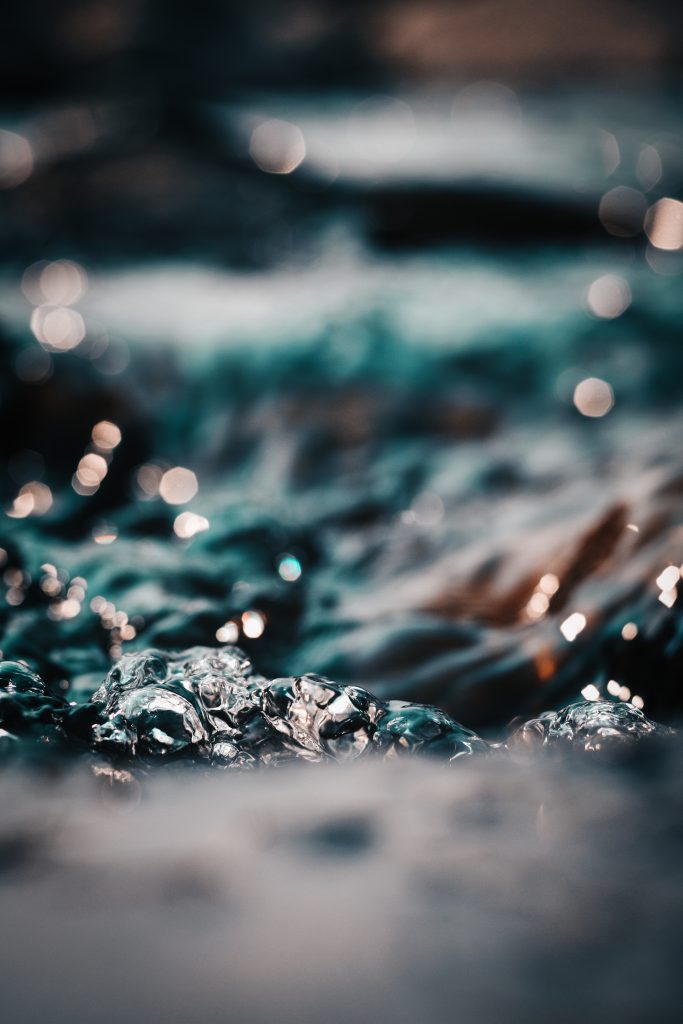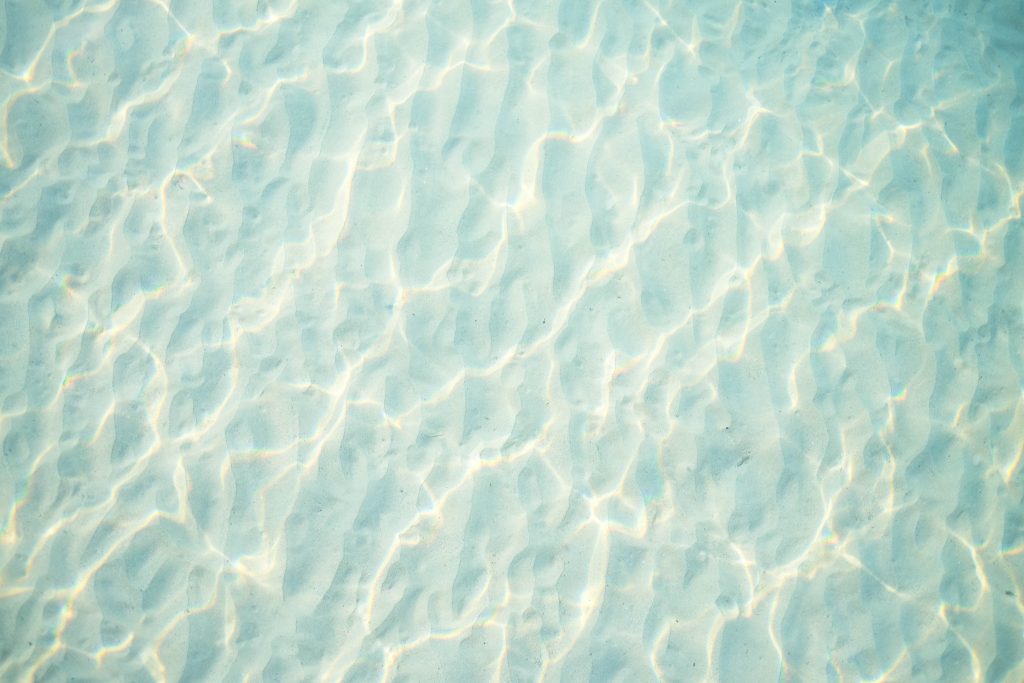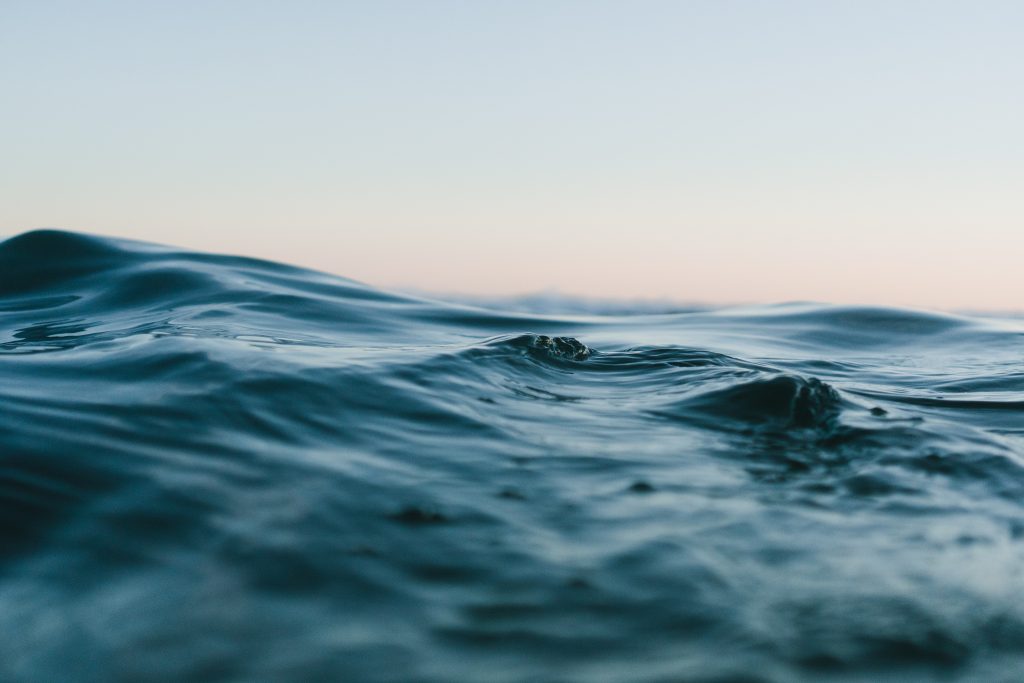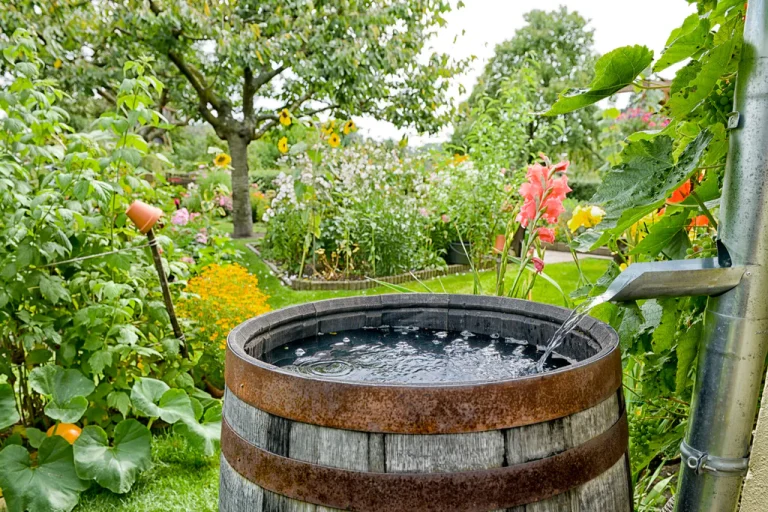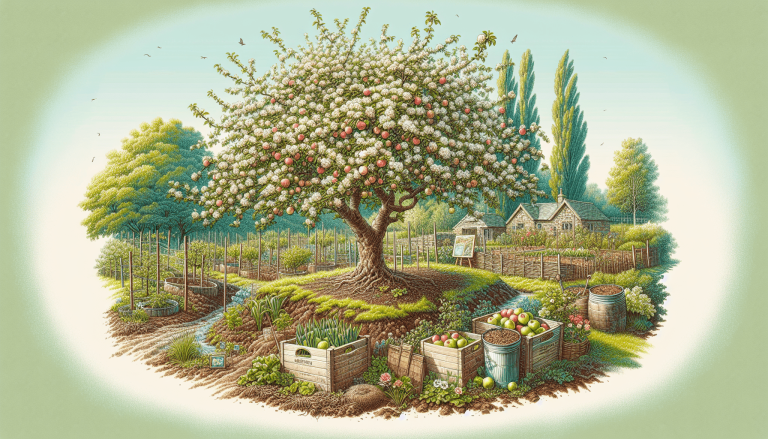In need of some helpful water-saving tips for your UK garden? Look no further! This article aims to provide you with practical and easy-to-implement suggestions that will not only help conserve water but also maintain the beauty and health of your garden. From choosing drought-resistant plants to capturing rainwater, these tips will equip you with the knowledge and tools to create a more sustainable and eco-friendly outdoor space. So, let’s dive in and discover how you can save water while still enjoying a vibrant and thriving garden.
Table of Contents
ToggleChoosing the Right Plants
Selecting Native Plants
When it comes to water-saving in your UK garden, one of the smartest decisions you can make is to choose native plant species. Native plants have adapted to the local climate and are generally more drought-tolerant, which means they require less watering. Additionally, they are more resistant to pests and diseases, reducing the need for chemical treatments. By selecting native plants, you are not only conserving water but also creating a habitat that supports the local ecosystem.
Choosing Drought-Tolerant Varieties
Another effective way to save water in your garden is by opting for drought-tolerant plant varieties. These plants have evolved to survive in arid conditions by storing water in their leaves, stems, or roots. Some popular drought-tolerant options include lavender, sedum, yucca, and succulents. By incorporating these plants into your garden, you can significantly reduce your watering needs while still enjoying a beautiful and thriving landscape.
Opting for Perennial Plants
Using perennial plants instead of annuals can also contribute to water savings in your garden. Perennials have a longer lifespan and require less maintenance compared to annuals, which need to be replanted every year. This means that perennial plants can establish deeper root systems, enabling them to find water sources at lower soil levels. With their efficient water utilization, these plants can sustain themselves with less frequent watering, further conserving water resources in your garden.
Watering Techniques
Watering Early in the Morning
One key strategy to minimize water loss through evaporation is to water your garden in the early morning. By doing so, you take advantage of cooler temperatures and reduced winds, allowing water to penetrate the soil effectively. Watering in the morning also gives the plants ample time to absorb the moisture before the sun becomes too strong, reducing the risk of diseases caused by wet foliage sitting overnight.
Using a Watering Can or Hose with a Nozzle
When hand-watering your plants, it’s essential to use a watering can or a hose with a nozzle instead of a running hose without a nozzle. This allows you to direct the water precisely where it’s needed, minimizing waste and ensuring that the roots receive adequate hydration. It’s also crucial to water at the base of the plants, as wetting the foliage unnecessarily can lead to water loss through evaporation.
Installing a Drip Irrigation System
For larger gardens or areas with many plants, installing a drip irrigation system can be a highly efficient way to water your garden. Drip irrigation delivers water directly to the root zone of the plants, reducing evaporation and preventing water wastage. It also ensures that water is applied slowly and uniformly, promoting deep root growth and minimizing runoff. With the use of timers and programmable controllers, you can customize the watering schedule to meet the specific needs of your plants, maximizing water efficiency.
Mulching
Applying Organic Mulch
Applying organic mulch is a simple yet effective technique to conserve water in your garden. Mulch acts as a protective layer over the soil, reducing moisture evaporation and weed growth. Organic mulches like wood chips, straw, or bark not only help retain soil moisture but also improve soil structure as they break down over time. Apply a layer of mulch around the base of your plants, leaving a small space around the stem, to create a natural buffer against water loss and maintain soil moisture levels.
Using Plastic Mulch or Landscape Fabric
In certain situations, using plastic mulch or landscape fabric can be a viable option for water-saving purposes. These materials create a barrier between the soil and the air, preventing water from evaporating while still allowing air and nutrients to reach the root zone. Plastic mulch is particularly beneficial in vegetable gardens, as it warms the soil and can extend the growing season. However, it’s important to note that plastic mulch or landscape fabric should be used sparingly and only in areas where there is a genuine need, as they can hinder the natural exchange of moisture and air in the soil.
Rainwater Harvesting
Installing a Rain Barrel
One of the simplest and most effective ways to save water in your garden is by installing a rain barrel. A rain barrel is a container that collects and stores rainwater from your roof, which can then be used for watering plants. It not only reduces your reliance on municipal water but also helps prevent excessive stormwater runoff, which can contribute to local flooding. Install a rain barrel beneath a downspout and connect it to a hose or a drip irrigation system for convenient access to stored rainwater.
Using a Water Butt
Similar to a rain barrel, a water butt is another water-saving solution that collects and stores rainwater. A water butt is typically larger than a rain barrel, allowing for greater water storage capacity. It can be connected to multiple downspouts or positioned to capture water from large roof areas. With a tap attached to the bottom of the water butt, you can easily access the collected rainwater and use it to irrigate your garden during dry periods.
Soil Management
Improving Soil Structure and Composition
Proper soil management is crucial for water conservation in your garden. Improving soil structure and composition can help optimize water absorption and retention. Consider incorporating organic matter, such as compost or well-rotted manure, into your soil. These additions enhance soil structure, creating a crumbly texture that allows for better water distribution and root penetration. Well-draining soil promotes healthy root development while minimizing the risk of waterlogged conditions that can lead to root rot.
Adding Organic Matter
In addition to improving soil structure, adding organic matter also contributes to water-saving efforts. Organic matter acts as a sponge, absorbing water and releasing it slowly to plant roots. This moisture retention capacity reduces the need for frequent watering, as the soil remains moist for longer periods. Regularly incorporate organic matter into your garden beds or use it as a mulch to improve water efficiency and support overall soil health.
Using Soil Amendments
Certain soil amendments, such as perlite or vermiculite, can help increase water retention in sandy or excessively drained soils. These lightweight materials improve soil texture without compacting it, allowing for better water storage and slow-release to plant roots. Incorporate soil amendments according to the specific needs of your soil type, and you will notice a significant improvement in water efficiency and plant health.
Lawn Care
Mowing at the Right Height
Proper lawn care practices play a significant role in water conservation. One essential step is to mow your lawn at the right height. Longer grass blades provide shade for the soil, reducing evaporation and preserving soil moisture. Aim to maintain a mowing height of around 2 to 3 inches for most UK grass varieties. Avoid scalping the lawn by cutting it too short, as this can weaken the grass and make it more susceptible to drought stress and weed invasion.
Using Grass Varieties Suitable for UK Climate
Choosing grass varieties that are well-suited to the UK climate can greatly reduce your lawn’s water requirements. Look for drought-resistant species such as fine fescues, meadow grass, or hard fescues. These grasses have deep root systems and higher tolerance to dry conditions, allowing them to withstand periods of reduced watering without sacrificing their appearance. By selecting the right grass varieties, you can have a green and healthy lawn while minimizing water usage.
Watering Lawns Less Frequently
Most lawns, especially those with drought-resistant grasses, can thrive with less frequent watering. Instead of watering your lawn daily, adjust your watering schedule to once or twice a week, depending on weather conditions. Deep watering encourages the growth of deep roots, making the grass more resilient to drought. Monitor your lawn’s moisture levels by checking the soil’s moisture content or observing signs of wilting. By adopting this water-saving practice, you can promote a vibrant and sustainable lawn while conserving water.
Hydrozoning
Grouping Plants with Similar Water Needs
Hydrozoning is a technique that involves grouping plants with similar water needs together in your garden. By creating distinct watering zones, you can minimize water waste by providing each zone with the appropriate amount of water. Group plants with high water requirements in one area and those with lower water needs in another. This way, you can avoid overwatering certain plants and prevent underwatering others. Hydrozoning allows you to efficiently manage water distribution and tailor your watering practices to the specific needs of different plantings.
Creating Watering Zones
Along with grouping plants based on their water needs, it’s important to create separate watering zones to ensure precise and targeted irrigation. Dividing your garden into zones allows you to deliver water more efficiently, avoiding unnecessary overspray or runoff. Use water-spraying systems or drip irrigation to supply water to each zone separately. By customizing the watering schedule and duration for each zone, you can avoid wasting water while keeping your plants healthy and thriving.
Irrigation System Maintenance
Checking for Leaks or Broken Sprinkler Heads
Regularly inspecting your irrigation system for leaks or broken sprinkler heads is essential for water conservation. Even a small leak can result in significant water loss over time. Check all connections, pipes, and sprinklers for signs of leaks or malfunctions. Repair or replace any damaged components promptly to prevent unnecessary water wastage. By maintaining a properly functioning irrigation system, you can ensure efficient water delivery to your plants and avoid unnecessary water runoff.
Adjusting Sprinkler Settings for Optimal Coverage
To maximize water efficiency, it’s crucial to adjust your sprinkler settings to provide optimal coverage. Ensure that the sprinklers are properly aligned, so water is directed onto the intended areas and not wasted on sidewalks, driveways, or other non-vegetated surfaces. Adjust the spray pattern and radius to avoid overspray or watering areas that don’t require irrigation. By fine-tuning your sprinkler settings, you can minimize water waste and improve the effectiveness of your irrigation system.
Regularly Inspecting and Cleaning Irrigation Equipment
Regular maintenance and cleaning of your irrigation equipment are vital for water-saving efforts. Inspect and clean sprinkler heads, nozzles, filters, and valves to remove any debris or mineral buildup that may restrict water flow. Clogged or obstructed components can reduce water pressure, leading to inefficient irrigation and incomplete coverage. By keeping your irrigation system clean and well-maintained, you can ensure the proper functioning of the equipment, minimize water waste, and promote healthier plant growth.
Garden Design
Creating Shaded Areas to Minimize Water Evaporation
Integrating shaded areas into your garden design is an effective way to minimize water evaporation. Planting tall trees or installing pergolas, arbors, or shade sails can provide much-needed shade for certain areas of your garden. By reducing direct sunlight exposure, you can slow down water evaporation from the soil surface and help maintain soil moisture levels. Shaded areas also create a comfortable space to relax and enjoy your garden while conserving water.
Designing Functional and Practical Landscapes
When planning your garden design, consider functionality and practicality as essential aspects. Opt for low-maintenance landscaping features that require minimal watering and upkeep. Incorporate hardscapes, such as patios or paths, that not only add visual interest but also reduce the area that needs regular watering. Additionally, consider using porous paving materials that allow water to penetrate the soil, preventing runoff and encouraging natural water absorption. By designing a garden that combines aesthetics with water-saving elements, you can create a beautiful and sustainable outdoor space.
Water-Saving Tools and Technologies
Using Smart Controllers for Irrigation Systems
Smart controllers are technologically advanced devices that can optimize your irrigation system’s water usage. These controllers use weather data, soil moisture sensors, and plant water requirements to adjust watering schedules, duration, and frequency automatically. By relying on real-time information, smart controllers can prevent overwatering and respond to changing weather conditions, resulting in significant water savings. Upgrade your irrigation system with a smart controller to take advantage of this efficient technology and enhance water conservation in your garden.
Utilizing Soil Moisture Sensors
Soil moisture sensors are handy tools that measure the moisture content at various depths in the soil. These sensors provide real-time data that helps you determine when and how much water your plants actually need. By avoiding guesswork and basing your watering decisions on accurate measurements, you can prevent overwatering and underwatering, resulting in healthier plants and reduced water consumption. Install soil moisture sensors in different areas of your garden to monitor moisture variations and fine-tune your watering practices accordingly.
Installing Rain Sensors or Weather Stations
Installing rain sensors or weather stations can greatly enhance water-saving efforts in your garden. Rain sensors automatically interrupt the irrigation system when rainfall is detected, preventing unnecessary watering during wet periods. This feature eliminates the possibility of overwatering due to manual oversight or forgetting to adjust the system after rainfall. Weather stations provide comprehensive weather data, including temperature, humidity, wind speed, and evapotranspiration rates. By utilizing this information, you can adapt your watering schedule and duration to match current weather conditions, maximizing water efficiency.
In conclusion, there are numerous water-saving techniques and strategies you can employ to maintain a beautiful garden while conserving water in the UK. By selecting native and drought-tolerant plants, utilizing efficient watering techniques, implementing mulching and rainwater harvesting methods, managing soil effectively, and adopting smart technologies and practical garden designs, you can significantly reduce water usage. These practices not only benefit the environment but also promote sustainable gardening practices and help combat water scarcity. With a little effort and conscious choices, you can create a thriving and water-efficient garden that you can enjoy for years to come.

